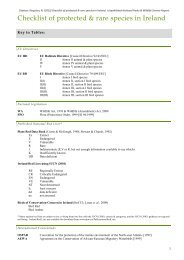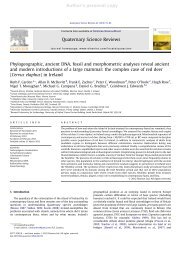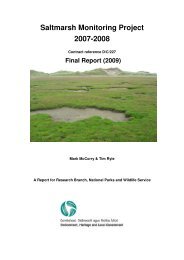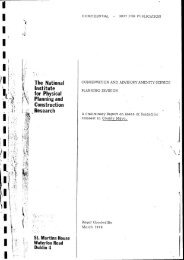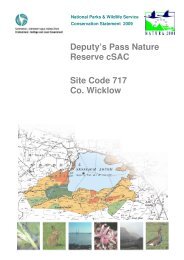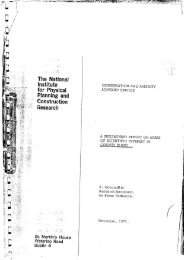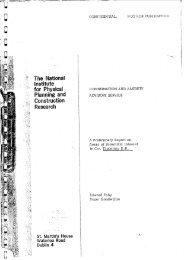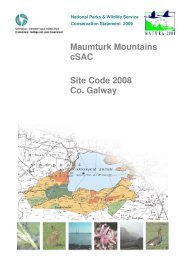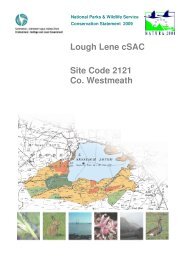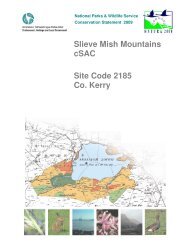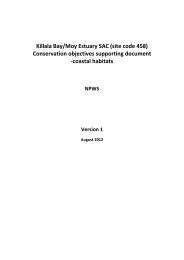The beetles of decaying wood in Ireland - National Parks & Wildlife ...
The beetles of decaying wood in Ireland - National Parks & Wildlife ...
The beetles of decaying wood in Ireland - National Parks & Wildlife ...
You also want an ePaper? Increase the reach of your titles
YUMPU automatically turns print PDFs into web optimized ePapers that Google loves.
Saproxylic <strong>beetles</strong> <strong>of</strong> <strong>Ireland</strong><br />
____________________________<br />
H36 Tyrone: Caledon Deer Park (H7543), many dates, 2006, KNAA.<br />
H37 Armagh: Tynan Abbey Estate, 21.vi.2011, 1.vii.2011, 26.vii.2011, RA.<br />
H39 Antrim: Portmore Lough, 8.x.2009, RA; Shane’s Castle, 1.vii.2010, RA.<br />
FAMILY CLAMBIDAE<br />
Clambus pallidulus Reitter, 1911 – Rare<br />
42<br />
Figure 12: S<strong>in</strong>odendron cyl<strong>in</strong>dricum © Keith Alexander<br />
Has been reported <strong>in</strong> Brita<strong>in</strong> from a hollow apple tree, <strong>in</strong> debris <strong>in</strong> a rotten elm stump, and from moss<br />
among rotten logs, imply<strong>in</strong>g a saproxylic association.<br />
H2 North Kerry: Killarney district, identified at the time as Clambus m<strong>in</strong>utus, male & female, ii.1918;<br />
male, Flesk, iv.1939, EFB (Johnson, 1997).<br />
FAMILY SCIRTIDAE<br />
Prionocyphon serricornis (Müller, P.W.J., 1821) – Uncommon<br />
Develops <strong>in</strong> water-logged hollows <strong>in</strong> old trees, especially beech, and <strong>in</strong>clud<strong>in</strong>g external hollows<br />
amongst roots; larvae aquatic, feed on detritus from dead leaves; adults active fliers, short-lived.<br />
‘Appears to be common on beech trees just about everywhere here but has been completely<br />
overlooked (by me) until now. I have now looked <strong>in</strong> six locations and found it <strong>in</strong> five.’ (RA, Jan. 2008).<br />
<strong>The</strong>se latter f<strong>in</strong>ds (also below) refer to larvae only, although adults are relatively easy to rear.<br />
Assessed as Data Deficient <strong>in</strong> Foster et al. (2009).



